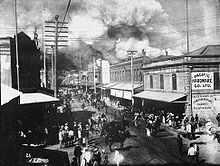
Honolulu is the capital and most populous city of the U.S. state of Hawaii, which is in the Pacific Ocean. An unincorporated city, it is the county seat of the consolidated City and County of Honolulu, situated along the southeast coast of the island of Oʻahu, and is the westernmost and southernmost major U.S. city. Honolulu is Hawaii's main gateway to the world. It is also a major hub for business, finance, hospitality, and military defense in both the state and Oceania. The city is characterized by a mix of various Asian, Western, and Pacific cultures, reflected in its diverse demography, cuisine, and traditions.
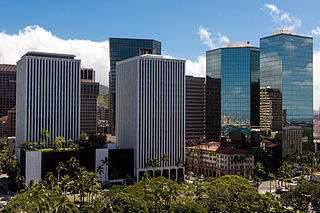
Downtown Honolulu is the current historic, economic, and governmental center of Honolulu, the capital and largest city of the U.S. state of Hawaii. It is bounded by Nuʻuanu Stream to the west, Ward Avenue to the east, Vineyard Boulevard to the north, and Honolulu Harbor to the south. Both modern and historic buildings and complexes are located in the area, with many of the latter declared National Historic Landmarks on the National Register of Historic Places.
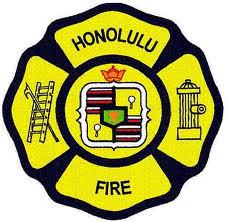
The Honolulu Fire Department (HFD) provides fire protection and first responder emergency medical services to the City & County of Honolulu, Hawaii, United States, under the jurisdiction of the Mayor of Honolulu. Founded on December 27, 1850, by Kamehameha III and Alexander Cartwright, the Honolulu Fire Department serves and protects the entire island of O'ahu, covering over 600 square miles (1,600 km2) of territory, home to more than 880,000 residents and over 4 million annual visitors.
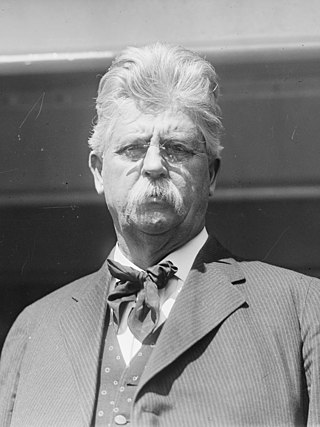
Henry Tifft Gage was an American lawyer, politician and diplomat. A Republican, Gage was elected to a single term as the 20th governor of California from 1899 to 1903. Gage was also the U.S. Minister to Portugal for several months in 1910.

Rupert Lee Blue was an American physician and soldier. He was the fourth Surgeon General of the United States from 1912 to 1920. He served as president of the American Medical Association in 1916–17.

The third plague pandemic was a major bubonic plague pandemic that began in Yunnan, China, in 1855. This episode of bubonic plague spread to all inhabited continents, and ultimately led to more than 12 million deaths in India and China, and at least 10 million Indians were killed in British Raj India alone, making it one of the deadliest pandemics in history. According to the World Health Organization, the pandemic was considered active until 1960 when worldwide casualties dropped to 200 per year. Plague deaths have continued at a lower level for every year since.

The government of the City and County of San Francisco utilizes the "strong mayor" form of mayoral/council government, composed of the Mayor, Board of Supervisors, several elected officers, and numerous other entities. It is the only consolidated city-county in California, and one of only thirteen charter counties of California. The fiscal year 2019–20 city and county budget was approximately $12.3 billion.

Bubonic plague is one of three types of plague caused by the bacterium Yersinia pestis. One to seven days after exposure to the bacteria, flu-like symptoms develop. These symptoms include fever, headaches, and vomiting, as well as swollen and painful lymph nodes occurring in the area closest to where the bacteria entered the skin. Acral necrosis, the dark discoloration of skin, is another symptom. Occasionally, swollen lymph nodes, known as "buboes", may break open.

Kapālama, now often called Pālama, is a neighborhood of Honolulu, Hawaii. It is often combined with the adjacent Kalihi and referred to as a single entity, Kalihi–Pālama.

The Merchant Street Historic District in Honolulu, Hawaii, was the city's earliest commercial center.

The Oʻahu Cemetery is the resting place of many notable early residents of the Honolulu area. They range from missionaries and politicians to sports pioneers and philosophers. Over time it was expanded to become an area known as the Nuʻuanu Cemetery.
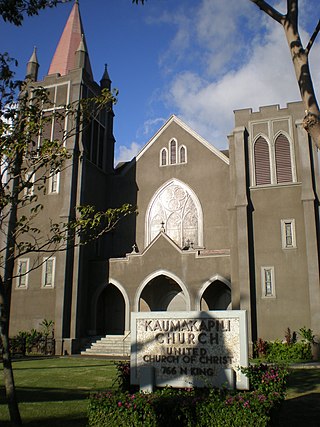
Kaumakapili Church is a Gothic Revival church located at 766 North King Street in the Kapālama neighborhood of Honolulu, Hawaii. It was originally established on April 1, 1838, at the corner of Smith and Beretania Streets as a Protestant church for common people; the only existing church, the Kawaiahao Church, was attended by nobility. A new brick and wood frame church building with two steeples was built for the church from 1881 to 1888; however, that building was burned along with large areas of Chinatown in an attempt to control an outbreak of bubonic plague. Construction began on a third church building at the current site in 1910; this church, which is still in use, was dedicated in 1911. A $2.4 million restoration project conducted by Mason Architects in 1993 rehabilitated the church, which had been extensively damaged by nature and vandalism.

Naval Station Pearl Harbor is a United States naval base on the island of Oahu, Hawaii. In 2010, as part of the recommendations of the Base Realignment and Closure (BRAC) commission, the naval station was consolidated with the United States Air Force's Hickam Air Force Base to form Joint Base Pearl Harbor–Hickam. Since 1940, Pearl Harbor has been the headquarters of the United States Pacific Fleet.

Joseph James Kinyoun was an American physician and the founder of the United States' Hygienic Laboratory, the predecessor of the National Institutes of Health.

Chinatowns are enclaves of Chinese people outside of China. The first Chinatown in the United States was San Francisco's Chinatown in 1848, and many other Chinatowns were established in the 19th century by the Chinese diaspora on the West Coast. By 1875, Chinatowns had emerged in eastern cities such as New York City, Boston, and Philadelphia. The Chinese Exclusion Act of 1882 barred Chinese immigration to the United States, but the Magnuson Act of 1943 repealed it, and the population of Chinatowns began to rise again. In the 2010s, the downturn in the U.S. economy caused many Chinese Americans to return to China.
The San Francisco plague of 1900–1904 was an epidemic of bubonic plague centered on San Francisco's Chinatown. It was the first plague epidemic in the continental United States. The epidemic was recognized by medical authorities in March 1900, but its existence was denied for more than two years by California's Governor Henry Gage. His denial was based on business reasons, to protect the reputations of San Francisco and California and to prevent the loss of revenue due to quarantine. The failure to act quickly may have allowed the disease to establish itself among local animal populations. Federal authorities worked to prove that there was a major health problem, and they isolated the affected area; this undermined Gage's credibility, and he lost the governorship in the 1902 elections. The new governor, George Pardee, implemented public-health measures and the epidemic was stopped in 1904. There were 121 cases identified, resulting in 119 deaths.

Kong Tai Heong was a trained obstetrician who was the first Chinese woman to practice medicine in Hawaii. Also certified as a midwife, she delivered babies for the Hawaiian, Portuguese and Chinese populations in Honolulu, practicing for over fifty years. In 1946, she was credited by Robert Ripley as having delivered more babies than any other private practitioner in the United States.
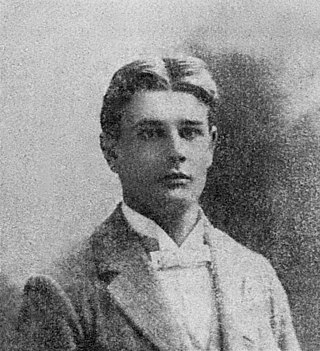
William Cotton Hobdy was an American physician and quarantine officer. From 1914 to 1917, he served as the final physician of Queen Liliuokalani, the last monarch of the Kingdom of Hawaii.
Ho Yow served as Chinese consulate general of San Francisco during a part of the San Francisco plague. His service as consulate general lasted from 1887 to 1902. Ho Yow was born in Hong Kong to a wealthy Guangzhou family. After a British education in his hometown, Ho completed his studies in Oxford and Long before returning to Hong Kong to practice law.

The Great Hanoi Rat Massacre occurred in 1902, in Hanoi, Tonkin, French Indochina, when the French government authorities attempted to control the rat population of the city by hunting them down. As they felt that they weren't making enough progress and due to labour strikes they created a bounty programme that paid a reward of 1¢ for each rat killed. To collect the bounty, people would need to provide the severed tail of a rat. Colonial officials, however, began noticing rats in Hanoi with no tails. The Vietnamese rat catchers would capture rats, sever their tails, then release them back into the sewers so that they could produce more rats.



